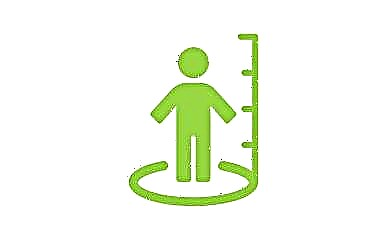
Preparing for school is a long step in your child's development. Classes should be started no earlier than a year before this moment. Educators and parents have a wide variety of math exercises and activities to choose from to achieve this goal. Among them, graphic dictations in cells for preschoolers are of no small importance.

Fun or challenging task?
For many children, such pictures by cells in a notebook are an interesting game and exciting entertainment. It is important for an adult not to turn this activity into a boring, tedious duty, where the kid is scolded for failure. And then the child will always be happy to study.
But many babies can have difficulties. Most often they are associated with the fact that the child has not yet mastered the count within 10, he confuses the concepts of "right-left", "top-bottom". In this case, adults need to help the baby to avoid mistakes, correct him, and praise him for a positive result.


Age at which to start practicing
You can start drawing in cells with a child from the age of 4. The first homework at this age should be easy. At first, you can complete the task with your child on a board or sheet of paper so that he sees how to move. For beginners, drawing simple geometric shapes is fine. You can start with the image of a square, rectangle, simple patterns. You can learn to move diagonally from the drawings of a triangle, trapezoid, rhombus.

At 5 years old, a child may well draw simple pictures under dictation without visual support.... For example, you can ask him to draw a flower on paper. Also, a five-year-old preschooler may well cope with drawing a house or an airplane.

For children 6-7 years old, tasks can begin to be complicated by introducing more diagonal lines into them. An example of such a task would be a drawing of a rocket.


Lesson methodology
The lesson should start with the preparation of the workplace and the necessary materials.... Drawings are made in a notebook in a box with a simple pencil. In order for the child to have the opportunity to correct the mistake, an eraser is required, with the help of which incorrectly drawn lines are removed. An adult should prepare or print a manual with a sample of the assignment. You don't have to tell the child which drawing will be the purpose of the graphic dictation. After correct execution, he will see the result on his sheet.

As a rule, the instructions suggest numbers with arrows, such as 2 ↑, 3 ←. The numbers in this case indicate the number of cells by which it is necessary to move in a given direction. It is indicated by an arrow that is drawn next to the number. So, in our example it should be read: move 2 cells up, 3 cells to the left. They begin to move from the starting point, which the adult sets for the younger children himself, and the older preschoolers can already be offered to put it on their own.
Before you start a lesson for preschoolers, you need to repeat the counting with them within 10, the concept of "right-left", "top-bottom". You can ask the baby to show what it means "we move to the right, we move up, to the left of, we move down."

Try to diversify the very conduct of the graphic dictation by including tongue twisters, pure twisters, riddles, finger gymnastics, physical exercises, discussion of the results obtained and a conversation or story into the lesson. It is desirable that everything that is included in the lesson should be on the same topic as the drawing.
Before conducting a graphic dictation, give your child the installation that it is necessary to try to draw straight, neat lines and be very attentive when completing the task.

After the dictation is over, be sure to praise the kid for the achieved result, if necessary, find the place where he made a mistake with him and correct it. If the child has a desire, then you can offer him to color the finished picture or shade it. If the child is not tired yet and wants to continue the lesson, then you can ask him to independently come up with a drawing by the cells, and then together with him compose a graphic dictation on his figure.

Methods for conducting graphic dictations
You can carry out a graphic dictation in different ways.
- For those guys who are just starting to deal with them, the easiest way is suitable - under the dictation of an adult. In this case, the teacher or parent dictates to the child how many cells and in which direction to move.
An example of such a dictation is the "Dog" dictation. The task is performed by a crumb under the dictation of instructions from adults.
- The second way is to offer the child a piece of paper on which instructions for completing the task are written and the starting point from which the child needs to move is set. The child himself looks at the number of cells and the direction of movement.

See graphic dictation as an example
- "Car"
- "Horse"
- "Ship"
- The third way is to paint by symmetry. In such dictations, the child is offered a sheet on which half of the drawing is shown and a line of symmetry is drawn. The child finishes the drawing by symmetrically counting the required number of cells.
Here, an adult draws half of the Christmas tree and draws a line of symmetry. Children are invited to draw the second half symmetrically.
- The fourth method is suitable for older children. Here the child is offered a sheet with a sample of graphic dictation. The child on his sheet should draw the same picture as in the sample, independently counting the required number of cells and determining the direction in which he needs to move. Such dictations can be not only in the form of drawing lines through the cells, but also with the filling of the required number of cells with colored pencils completely. As a result, the child gets a colorful, beautiful picture in the notebook.

A simple option would be the "Elephant" drawing. Offer the child only the finished image and put a point from which he needs to move.

In the same way, you can invite the child to draw a "Snake", which is also easy to follow (the instructions should be removed, offering only the finished version) or "Squirrel".


More difficult tasks are

And the following schemes will be even more difficult to execute:
The benefits of completing tasks
Positive results from working with graphic dictation can be seen in 2-3 months, if you regularly offer them to preschoolers, at least several times a week. There is even a diagnostic technique by D.B. Elkonin, which is called "Graphic dictation". Its purpose is to determine the level of development in older preschool children of the prerequisites for educational activity. After all, it is they who provide good assistance in preparing the crumbs for schooling.

Performing graphic dictations, the kid prepares his hand for writing, consolidates the concepts of "right-left", "top-bottom", learns to navigate in space and on a notebook sheet, fixes the count within 10. Children learn to focus on what an adult says, to understand him and work in accordance with the instructions he offers. Without this skill, school will be very difficult for them.
We suggest you watch a video of how a child writes a graphic dictation in practice.
Graphic dictations contribute to the development of the ability to retain attention on a specific task, develop spatial imagination, thinking, fantasy, creativity, perseverance. The kid learns to coordinate his movements.
Drawing by cells helps to overcome such difficulties that often arise in the initial period of training for many children, such as undeveloped spelling vigilance, absent-mindedness. They also contribute to the expansion of the child's horizons, his vocabulary increases. Children are introduced to different ways of depicting objects on a piece of paper.

Important points
Performing graphic dictation is an exciting game for a child. It is she who is the leading activity for preschoolers. Adults who decide to work with a child should always remember this.
- Praise your child for a well-executed drawing.
- Do not scold a crumb for an unsuccessful job.
- Help him find and fix the error.
- Do not rush your child while drawing.
- Do not rush to move on to more complex options for drawings, especially if the child still makes mistakes in simple ones.
- Encourage the child's initiative to compose such a dictation on his own.
- Let him color or shade the finished work, but don't insist on it.
- Remember that children cannot practice for long. For older preschoolers, the maximum duration of the lesson should be no more than 25-30 minutes.
- Do not insist on continuing to work if the baby is tired.
- Conduct classes in a variety of ways. Tell your child interesting stories about the object depicted.
- At first, help the baby by completing the task with him on your sheet or on the board so that the child sees how and where to move, learns to count the cells in the right direction.
- It is very important that such a game only piques the interest of the child, and does not become a boring and unpleasant duty for him.
Practical tips for writing a graphic dictation at home.



